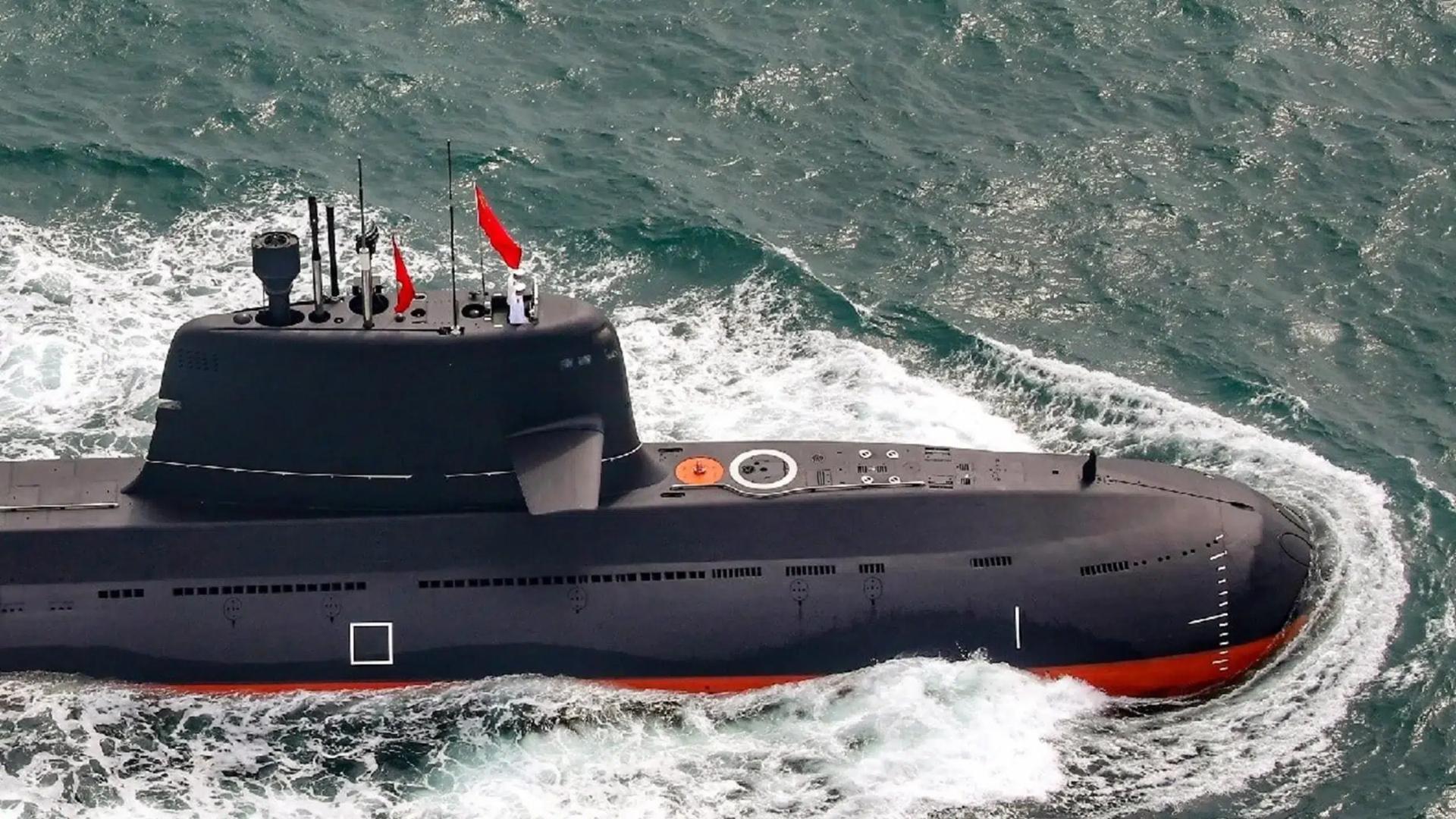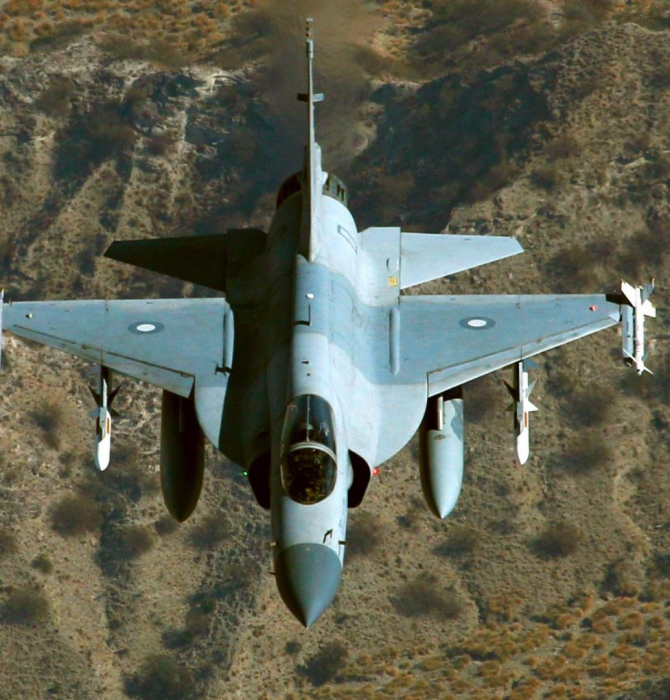7074Views

Defence Uncut | How Pakistan’s New Shark (Hangor) Aims to Push India Away from the Arabian Sea Defence Uncut Podcast
In this week’s episode of Defence Uncut, we shift our focus to the Pakistan Navy (PN) and the significant strategic implications of its forthcoming Hangor-class submarines.
With China launching the third boat, PNS Mangro, the program is gaining momentum, setting the stage for a major evolution in Pakistan’s maritime posture. These submarines are not merely new assets; they represent a doctrinal shift, extending Pakistan’s defensive perimeter deep into the Indian Ocean and creating a formidable anti-access/area denial (A2/AD) challenge for the Indian Navy.
We also delve into pressing developments concerning the Pakistan Air Force (PAF), including its manned-unmanned teaming (MUM-T) plans, new electronic warfare (EW) capabilities, and the untapped commercial potential of its vast training expertise. Finally, we offer an analysis of the Pakistan Armed Forces’ procurement strategy, highlighting a persistent and costly lack of inter-service standardization.
Listen to the full episode on YouTube or your favorite podcast platform.
How the Hangor Alters the Pakistan Navy’s Submarine Strategy
The Hangor-class air-independent propulsion (AIP)-equipped submarines (SSP) will be the largest conventional submarines ever operated by the PN and among the most capable in the region.
Designed for open-ocean operations with an emphasis on range and endurance, the induction of eight of these boats signals a clear intent to project power far beyond Pakistan’s littoral waters.
While specifications for the Hangor-class remain classified, analysis suggests they are not based on the standard S26 export-grade design, but are instead seemingly aligned with the People’s Liberation Army Navy’s (PLAN) Type 039B Yuan-class submarines. This assessment is bolstered by the fact that the PN leased a Yuan-class boat for training, an arrangement not extended to other export customers like Thailand, indicating a much deeper level of system commonality.
The strategic objective appears to be a variation of China’s A2/AD strategy. By deploying these long-range, high-endurance submarines to India’s eastern and southern flanks, the PN can create a persistent threat that forces the Indian Navy to concentrate its valuable anti-submarine warfare (ASW) assets, such as P-8I Poseidon aircraft and MH-60R Romeo helicopters, closer to its own shores. This effectively pulls the bulk of India’s surface fleet away from the Arabian Sea, freeing up Pakistan’s operational space and safeguarding its vital western sea lanes, through which critical trade and fuel shipments pass.
A key technological advantage is the submarine’s Air Independent Propulsion (AIP) system. The export version for Thailand boasts an underwater endurance of nearly three weeks without snorkeling. It is highly probable that the PN’s version, being based on the domestic Yuan-class, possesses a significantly longer AIP endurance. In a potential conflict, which could last several weeks, Hangor submarines could remain submerged for the entire duration of the war, presenting an unprecedented and resource-intensive ASW challenge for India.
This capability could be further amplified by the induction of the YJ-18 submarine-launched cruise missile. The YJ-18 combines a subsonic cruise phase for range with a supersonic terminal stage (Mach 2.5-3.0), making it incredibly difficult to intercept. Procuring and eventually producing this missile in-house would provide the PN with a long-range standoff strike capability, allowing the Hangors to threaten Indian assets from vast distances, further complicating any ASW effort.
PAF Modernization: Drones, Jammers, and Missed Opportunities
The PAF is actively developing a manned-unmanned teaming (MUM-T) program, a move confirmed by the recent reveal of the Al-Murtajiz drone concept. While the model displayed was of low fidelity, it represents a clear statement of intent. The program likely includes loyal wingman UCAVs, loitering munitions, and decoy drones, with core platforms like the KaGeM V3, co-developed with Turkey’s Baykar, already existing and adaptable for these new roles.
In the electronic warfare (EW) domain, there are rumours that the HAVA SOJ airborne standoff jammer, using the lone Bombardier Global 6000 platform, has been inducted. While unconfirmed, the PAF did signal earlier that it would eventually convert this aircraft for the jammer role. Compared to the PAF’s Falcon DA20s, the Global 6000 airframe offers significantly more space for mission systems, crew, and a wider variety of jamming arrays compared to the PAF’s older Falcon 20-based EW aircraft. This allows for the integration of modern, powerful active electronically-scanned array (AESA)-based jammers targeting multiple frequency bands, which are essential for mission success in a dense electromagnetic environment.
However, the PAF missed a significant opportunity by not acquiring the Leonardo BriteCloud expendable active decoy when it was available. Now used on platforms like the F-35, this technology is likely no longer accessible. This small, flare-sized DRFM decoy could have dramatically enhanced the survivability of not just fighter jets but also cruise missiles, a tactic being used to great effect in Ukraine.
A Critical Look at Procurement: The Cost of Short-Sightedness
A recurring theme in Pakistan’s defense planning is a series of short-sighted procurement decisions driven by a lack of inter-service cooperation and an over-reliance on off-the-shelf Chinese systems.
The acquisition of special mission aircraft is a prime example. The PAF is standardizing on the Global 6000, a widely available and supported platform, while the Navy selected the Embraer Lineage 1000 (E-190). This failure to standardize on a common platform means duplicated efforts in establishing maintenance, repair, and overhaul (MRO) facilities and a missed opportunity to build a unified, national-level expertise in configuring these complex aircraft.
An even more glaring issue is the procurement of medium-range surface-to-air missile (SAM) systems. The Army and Air Force have invested heavily in the Chinese HQ-16 (LY-80) system, a legacy design largely based on Soviet-era technology. This missile, weighing over a ton, is kinematically outmatched by modern threats and will likely be considered obsolete relatively soon, even by the Pakistani military’s own standards. Meanwhile, the Navy, recognizing these drawbacks, opted for the far more modern and capable CAMM-ER system.
This creates not just a logistical burden of supporting redundant systems but a dangerous capability gap. The argument that Chinese systems are cheaper ignores the “cost of failure”. Placing technologically dated systems in defense of high-value assets like airbases and billion-dollar aircraft against threats like the Brahmos supersonic cruise missile is a recipe for disaster.
The path forward must be a strategic shift towards building indigenous capacity through partnerships with peer countries like Turkey, South Africa, or Brazil.
As illustrated by Brazil’s development of its own Exocet-analogue anti-ship missile, the goal should not be to chase the most advanced specifications, but to master the fundamentals and build a sustainable, independent defense-industrial base. Relying on any single foreign supplier, whether China or the US, makes Pakistan a bargaining chip in their respective geopolitical calculations, undermining true strategic independence.
Listen to the Full Discussion
If you would like to read more about what was discussed in this episode, check out the links below:
- The COTS Advantage of the Pakistan Navy’s Sea Sultan LRMPA
- Pakistan Navy Looks to Steer Original Projects to New Levels
- Market Brief: Pakistan’s “Missing Middle” Surface-to-Air Missile (SAM) Requirement
If you have any questions, comments, or news topic suggestions you would like to hear us discuss, then send us an email at podcast@quwa.org.


